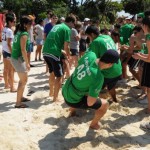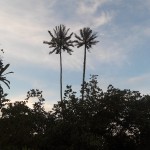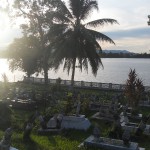Two weeks ago, I went for a diving trip over the weekend to Pulau Dayang in Malaysia. The trip was organized by the INSEAD Diving Club, one of the multiple sports clubs that are offered for students to join. The main purpose of the trip for me and roughly 30 other students was to get the PADI Open Water Diver certification, which will in the future allow me to rent diving gear and go on diving trips individually.
Prior to the trip, we had to take theory lessons (conveniently offered in one of the amphis at INSEAD by the diving school and trip operator) and also conduct two pool sessions in a swimming pool of a school here in Singapore. During the theory and pool sessions, we learned the basic skills required to dive, such as how all the gear is handled and also things like how to clear your mask from water underwater, how to breathe from another persons air supply in case your own runs out, or how to do an emergency ascent.
The trip itself started on Friday night after all participants had finished their classes. The trip to Pulau Dayang, which is a tiny island off the Malaysian east cost, took about seven hours – first by bus, then by boat – so we arrived on the island in the middle of the night. The accommodation was really basic (double bunk beds) but we were on the island for diving and not for luxury after all.
Saturday started in the morning with breakfast and some obligatory announcements, and then we headed out with a boat for the dives. We did three dives on Saturday, returning to the island to eat (and allow the nitrogen in the blood which increases when diving to slowly decrease again) in between each dive. The first two dives were again mostly about demonstrating the skills that we had learned during theory and pool sessions: mask clearing, regulator recovery, regulator clearing, alternate air source, fin pivot (neutral buoyancy), hovering in the water, CESA (controlled emergency swimming ascent) and finally finning around. The third dive was more about moving around underwater and discovering the marine life in the area: we saw a huge turtle, and also some cuttlefish.
We spent the evening on the beach, quite exhausted from the whole day of diving, and went to bed early to be fit for the second diving day. Sunday brought two more dives, the first one being more of a leisure dive going down to 18 meters, which is the maximum debt for which Open Water Divers are certified (there is a more advanced course which allows for deeper depths), and the last one also comprising a demonstration of navigation skills using a compass underwater. On the last two dives, we also saw some amazing marine life including another turtle, cuttlefish, lionfish, barracudas, clownfish and parrotfish.
After lunch, we still had some time to relax on the island because the tide didn’t allow us to leave immediately, so we worked a bit on our tan and enjoyed the provided food. After another seven hour trip back to Singapore, I finally arrived at home shortly past midnight.
All in all, it was an amazing and interesting weekend, and I am definitely planning to do more diving during my time here in Singapore, most likely also doing the Advanced Open Water Diver certification.
Some pictures follow, unfortunately I do not have any of me in the gear or any underwater pictures. However, the beauty of the island and the clarity of the surrounding ocean is quite obvious from the pictures.
-

-
The island “resort”
-

-
The dive boat
-

-
Air tanks on their way to the boat
-

-
Beautiful, clear blue ocean
-

-
Dive gear waiting to be used





























































